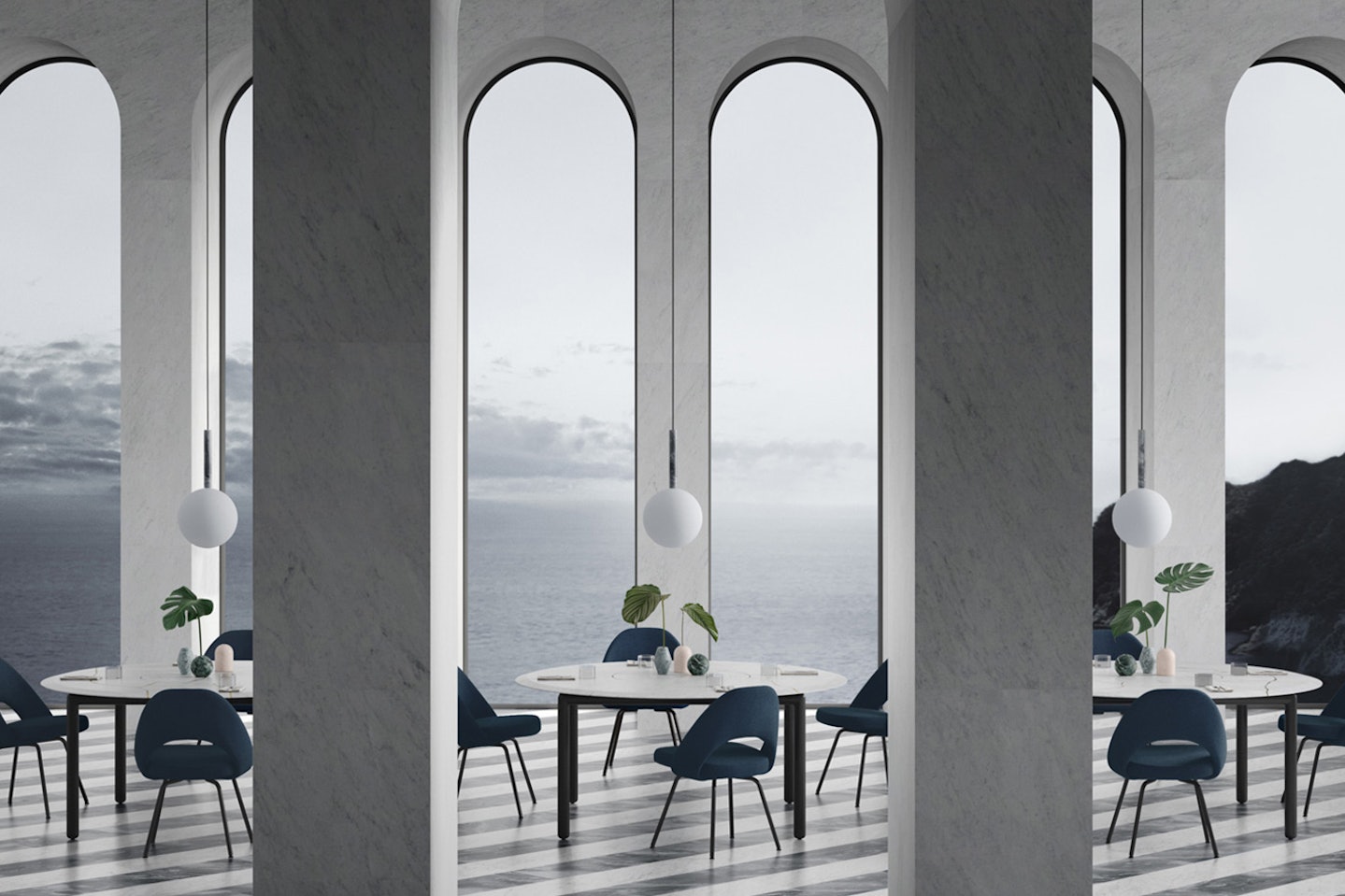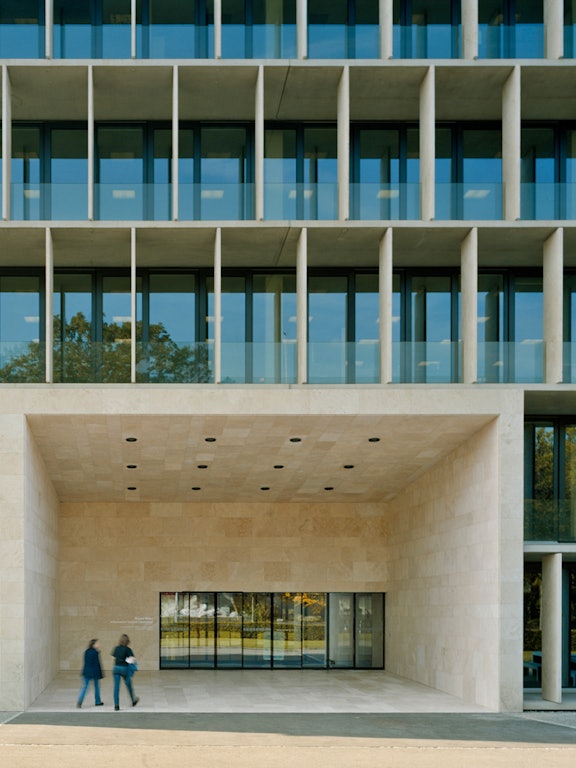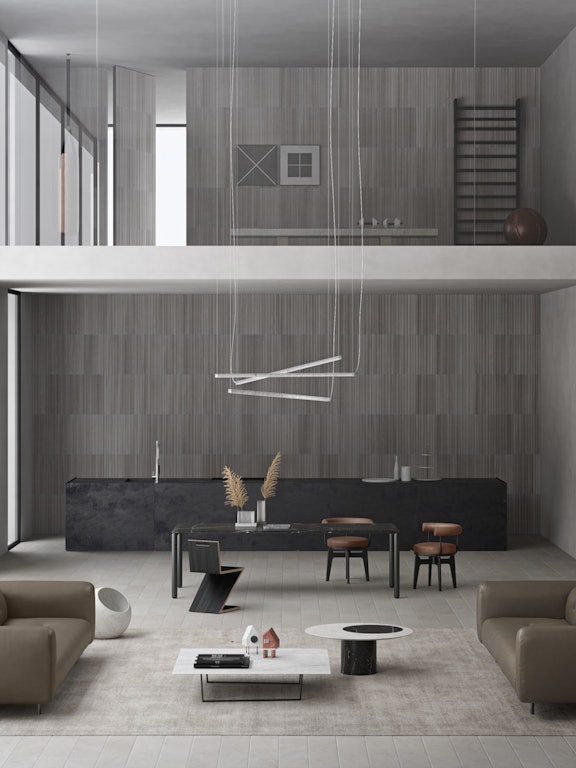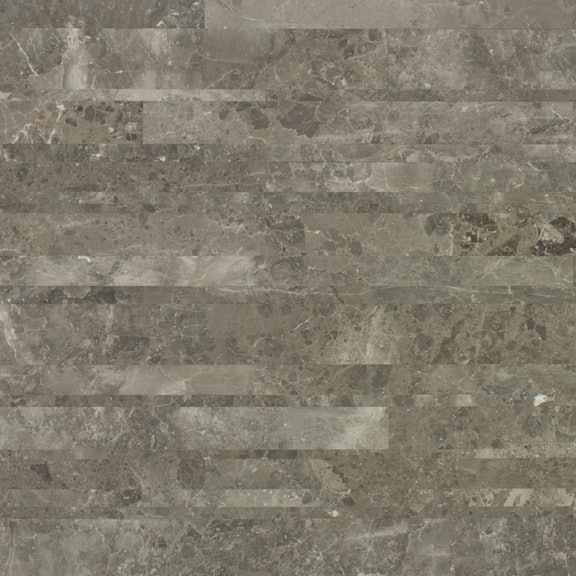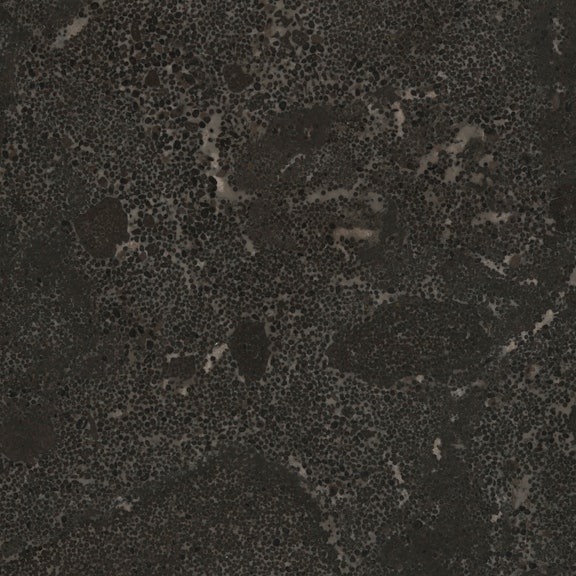Stone is forever: a journey through the centuries
03.2022
Dive with us in a journey to discover why natural stone has never lost its timeless appeal and what makes it so revered and unique.
A journey in natural stone from ancient civilisation through to Mies van der Rohe’s modern pavilion
Its indestructibility and incredible array of colours make natural stone a truly timeless material. And, although stone cannot speak, it recounts its history in a myriad of other ways, through the tiny marks the centuries leave on it and the patina that slowly builds up on its surface over time, expressing its authenticity and majesty in a way words could never quite do. Lived with – and often lived in – by generation after generation, natural stone contains the footprints of those who came before and those who tread there today, creating a tangible link with the past.
Prized since the dawn of time for its variety and the beauty of its veining, stone has long been used and revered by sculptors and architects the world over, with an enduring fascination that surely no other material can match. Its versatility and capacity to evolve and keep pace with trends and tastes, together with its extraordinary durability, have seen it used in all manner of ways throughout the centuries, from delicate sculptures to magnificent, towering monuments.
There is also another advantage of natural stone, however, and this is an aspect that is often overlooked, yet it is an area that is becoming more and more important as we understand the responsibility each of us has towards our planet. In an age of increasing focus on sustainability, natural stone ticks the box, as a stone floor laid today will last beyond our own lifetime, with no need to throw it away and replace it.
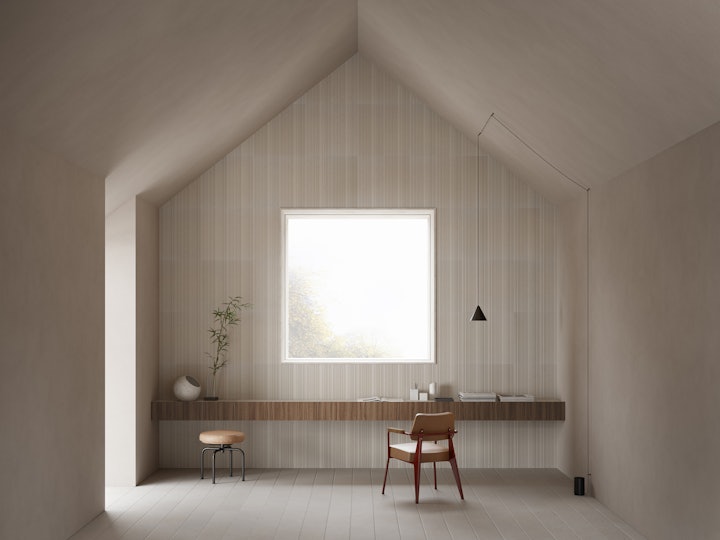
Natural stone throughout history
Of all the types of natural stone, it is marble that has perhaps particularly fascinated humankind since time immemorial. In fact, we can trace its origins as far back as 4000 BC, but it was the during the era of Ancient Greece that it became a symbol of prestigious and magnificent architecture. The word marble owes its roots to those times, deriving from the Greek word “marmaros” that literally translates as “splendid stone”.
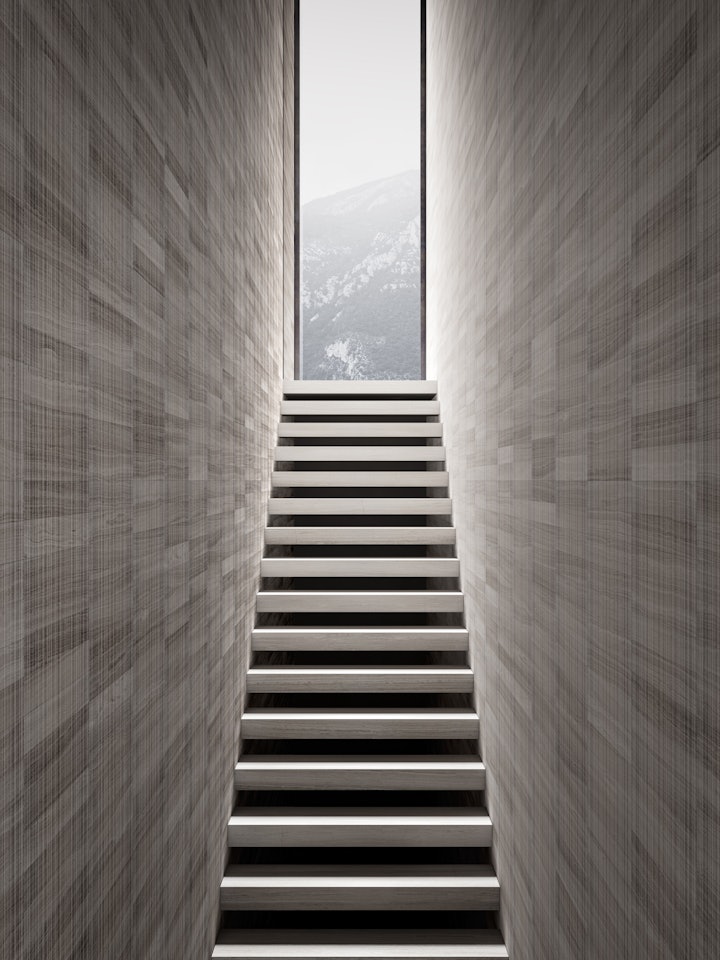
Marble in ancient architecture
As we wrote above, the tiny marks that accumulate over the centuries, and the patina that slowly builds up on its surface over time, express marble’s authenticity and majesty in a way words could never do justice to. These are intrinsic to its history and beauty.
The innate sacredness of marble and its multitude of glorious tones and colours have inspired countless artists and architects who have chosen it to give form to their dreams and ideas. Many of these still remain today, thousands of years on from their creation, yet still as splendid and awe-inspiring as ever, from the Greek Parthenon in beautiful Pentelic marble to the multi-coloured stones that make up the stunning floor of Rome’s Pantheon, and not forgetting, of course, Michelangelo’s incomparable sculptures, carved from single blocks of the most prized of all – white Carrara.
Surviving the ravages of wars and earthshattering events of all kinds, testament to what makes marble so unique and incomparable: the extraordinary history that is almost indistinguishable from the stone itself. When you touch marble, you feel that you really are touching history.
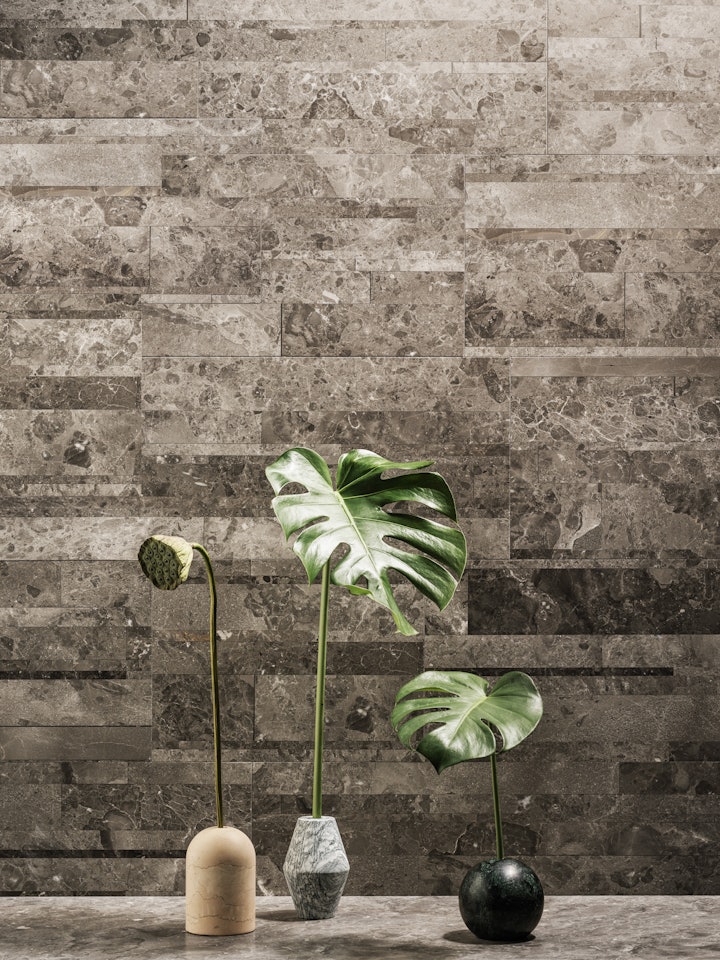
Natural stone today
Marble’s prolific usage in ancient times is well-documented but even today it is prized and appreciated as a gorgeous material, not only in buildings, but also in interior design and high-end accessories. It is not only enduring in terms of its physical characteristics, but also when it comes to relevance in terms of taste and trends. Its beauty never fades, but lives on, bringing its indefinable magic to the environment it is placed in.
And, speaking of environments, as mentioned above, natural stone also boasts impeccable eco-friendly credentials. Lived with – and often lived in – by generation after generation, it is not something that is used on a whim then replaced because it starts to look worn and tired. A marble floor or column is a lasting element that will endure, not just through the decades, but also, with love and care, centuries.
Sustainability and protecting the planet is more pressing than ever, and stone offers an opportunity to make a small contribution to the movement. And, if tastes change or offcuts remain, there are ways to give marble – or any natural stone – a new life, thus avoiding waste. Salvatori pioneered this approach with the creation in 2010 of Lithoverde®, the world’s first stone texture made up of discarded material, in the process extending the life of this precious natural resource.
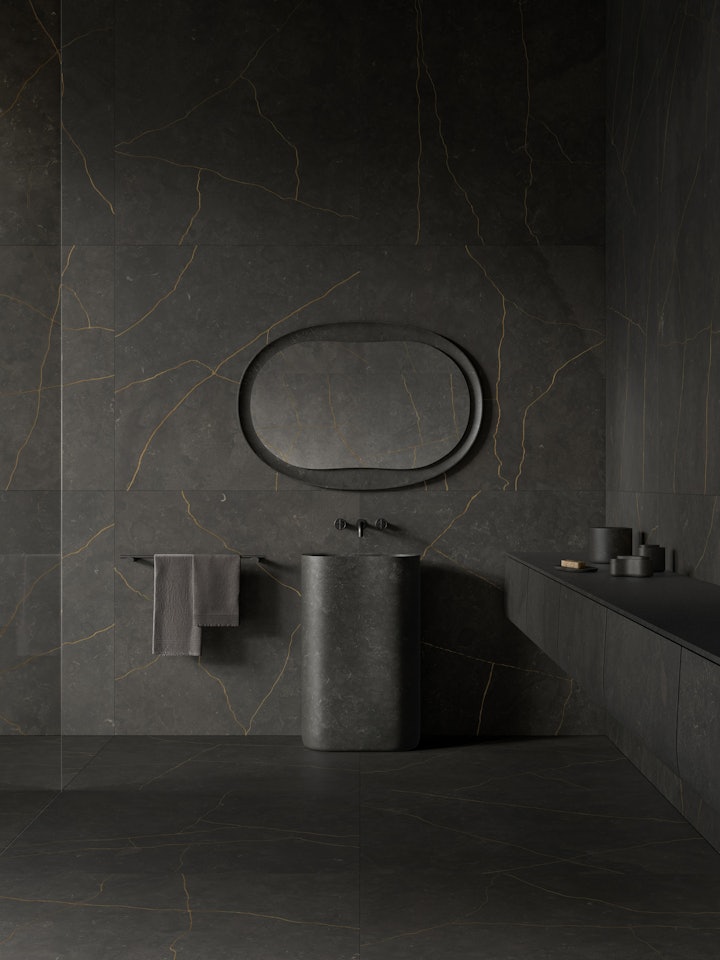
A case study: Mies van der Rohe’s Barcelona Pavilion
In our exploration of natural stone in the modern era, it would be remiss of us not to take a closer look at one of the greatest examples of its use in contemporary architecture: the Barcelona Pavilion, designed by the renowned architect Ludwig Mies van der Rohe for the 1929 Barcelona International Exhibition, and also known as the German Pavilion, because it was built to represent that nation at the fair.
The brief was that the structure should represent the newly found peace and strength of the rebuilt Germany in the aftermath of World War I and Mies van der Rohe brought this to life through a series of communal spaces that flowed into each other with no barriers or limitations.
The entire pavilion was built on a plinth made of Roman travertine, raised 130 cm above the ground to create the effect of an imposing podium that elevated the design in every sense. From this platform rose a series of slabs and slender columns that in turn supported a roof that appeared to float over the two components that made up the pavilion.
The fluid layout where indoor and outdoor spaces flowed seamlessly one to the other appeared to defy the standard ideas of interior-outdoor demarcation. Vast panes of glass and minimalist spaces on the pale travertine floor created an extraordinary sense of airiness.
And then, there was the marble. Inside the main structure, a wall in gold-red onyx split the space, creating a deceptively simple environment that was taken to a whole other level by the splendour of the stone. But the visual symphony of stone didn’t stop there. Alternating with the glass panes, every wall was made using travertine and two green marbles in the form of Verde Alpi from Northern Italy and an ancient green variant from Greece, enclosing the delightful internal pool in a timeless, tranquil environment.
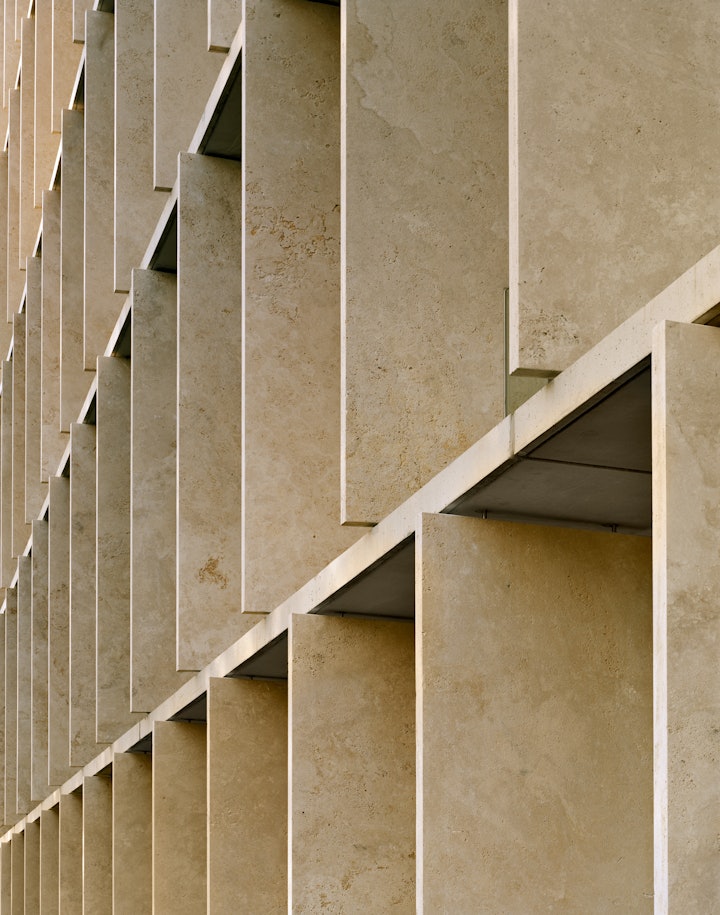
The choice of pale travertine was not only a clear homage to classic Roman architecture, but also an exceedingly elegant one.
This classic stone remains as relevant and beautiful today as when it was used for buildings such as the Colosseum almost 2000 years ago, and Zurich’s prestigious ETH university is a perfect recent example of this. Built using enormous slabs of Salvatori Light Travertine, the cladding not only provides protection from the sun, but also delivers on the aesthetic side, creating a wonderful play of light and shadow.
Just as Mies Van Der Rohe explored unusual ways to use stone with his pavilion almost a century ago, so too, does Salvatori continue to experiment, and the Lost Stones project is just one of the fruits of this work. A joint collaboration with architect and designer Piero Lissoni, Lost Stones sees reclaimed or abandoned slabs and fragments of beautiful old stone brought back to life through the ancient Japanese Kintsugi technique.
Broken pieces of stone are effectively patched together, with the cracks filled with a golden resin to create new slabs which can be used for walls, floors or even items of furniture. In fact, there is a special link to Mies Van Der Rohe, as some of the spectacular green marble left over from the pavilion has been used to create a handful of precious tables. Whoever is lucky enough to sit at one of these is truly in touch with a special slice of history.
